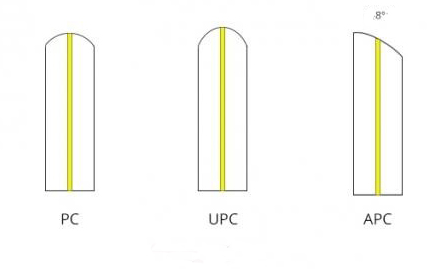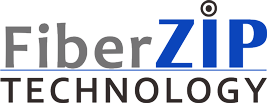Fiber Connector Type and Key Parameters
The main function of the optical fiber connector is to form an optical path by quickly connect two optical fibers. As an indispensable and most used passive device in the current optical communication system, the optical fiber connector is movable and reusable. The two end faces of the optical fiber are precisely butted through the optical fiber connector, so that the optical energy output from the transmitting fiber is coupled to the receiving fiber to the maximum extent. Due to the outer diameter of the optical fiber is only 125um, and the light transmission part is smaller, the single-mode fiber is only about 9um, and the multimode fiber is 50um and 62.5um, so the connection between the fibers needs to be accurately aligned and minimized intervention impact to system
Key component: ferrule
The key component that affects the performance of the connector is the ferrule through its function. The quality of the ferrule directly affects the precise center connection of the two optical fibers. The ferrule is made of ceramic, metal or plastic. Ceramic ferrules are widely used. The main material is zirconium dioxide, which has the characteristics of good thermal stability, high hardness, high melting point, wear resistance, and high processing accuracy. The sleeve is another important part of the connector. The sleeve plays an alignment role to facilitate the installation and fixation of the connector. The inner diameter of the ceramic sleeve is slightly smaller than the outer diameter of the ferrule, and the slotted sleeve tightens the two ferrules to achieve precise alignment.
In order to connect two optical fibers precisely, the ferrule end faces are usually ground into different structures. PC, APC, UPC represent the structure of the endface of the ceramic ferrule. PC is Physical Contact. PC is microsphere polishing, the ferrule surface is polished into a slightly spherical surface, and the fiber core is located at the highest point of bending, so that the two fiber end faces are in physical contact. APC (Angled Physical Contact) is called the physical contact of the inclined plane, and the end face of the optical fiber is usually polished into an 8 ° inclined plane. The 8 ° angled bevel makes the fiber end face more compact, and reflects the light to the cladding through its bevel angle instead of directly returning to the light source, providing better connection performance. UPC (Ultra Physical Contact), super physical end face. UPC is more optimized on the basis of PC, end surface polishing and surface finish, the endface looks more domed. The connector connection needs to have the same end structure, for example, APC and UPC cannot be connected together, which will degrade the connector performance

Basic parameters: insertion loss, return loss
The optical performance of fiber optic connectors is mainly measured by insertion loss and return loss. Insertion loss, referred to as “IL” is the optical power loss caused by the connection. It is mainly used to measure the optical loss between two fixed points in an optical fiber. It is usually caused by the lateral deviation between the two optical fibers, the longitudinal gap in the optical fiber connector, and the end surface quality. The unit is expressed in decibels (dB). The smaller the better, the general requirement should be no more than 0.5dB.
Return loss (“RL”) refers to the parameter of the signal reflection performance, which describes the power loss of the return / reflection of the optical signal. Generally, the larger the better, the value is usually expressed in decibels (dB). The typical RL value of the general APC connector is about -60dB, and the typical RL value of the PC connector is about -30dB.
In addition to insertion loss and return loss, interchangeability, repeatability, tensile strength, and operating temperature, Number of insertions and removals of the optical fiber connector also should be considered
The connector are listed to LC, SC, FC, MU, MTRJ, MPO/MTP, E2000, DIN , VF45 ect per the connecting type, and per the endface type they have PC, UPC, APC
LC connector
The Lucent connector is made with a modular jack (RJ) latch mechanism that is easy to operate. The size of the pin and sleeve used in the LC connector is half of as the size of SC, FC, etc., which is 1.25mm, so the appearance size is only half of the SC / FC. It is especially for connection with SFP and SFP + fiber optic transceiver
SC connector
The connector of the SC connector (‘Subscriber Connector’ or ‘Standard Connector’) is a snap-on standard square type connector, and the fastening method is a plug-and-socket type without rotation. This type of connector is easy to insert and remove.
FC connector
FC is with threaded body, simple structure for easy operation, and it is durable to be used in high vibration environments. Mainly used in datacom, telecom, measurement equipment, and SM lasers.
ST connector
ST stands for Straight Tip – a quick Release bayonet style Connector, They are cylindrical with twist lock coupling, 2.5mm keyed ferrule. ST Connectors are used both short distance applications and long line systemsMTP / MPO connector
MTP / MPO fiber connector is a special type of multi-fiber connector. The structure of the MPO connector is more complicated. It connects 12 or 24 or 32 optical fibers in a rectangular optical fiber ferrule. Usually used in high-density connection scenarios, such as data centers.
Fiber Zip Technology provides various type fiber connectors with ceramic sleeve from Three Circle. We also offer OEM service, all the components ensure to meet the IEC standard
